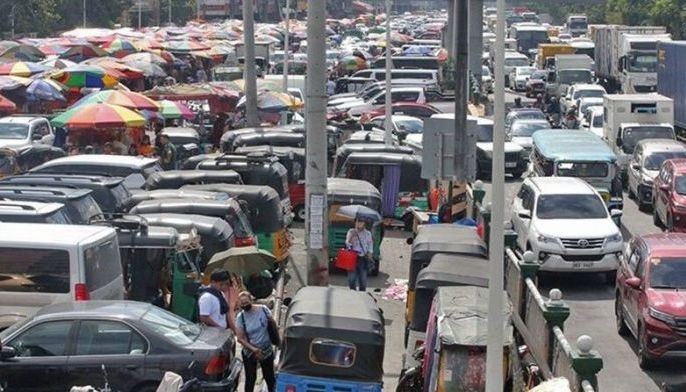Drivers are stuck in traffic along EDSA in Pasay City on December 27, 2023.
MANILA, Philippines — The Philippines ranks fifth in e-commerce traffic in East Asia, according to a report by the United Nations Economic and Social Commission for Asia and the Pacific (ESCAP).
ESCAP, in its report examining the state of the country's business-to-consumer (B2C) e-commerce market, said: “Although the Philippines is the second most populous country among the countries surveyed, it ranks only fifth in terms of traffic.” said. .
According to ESCAP, the Philippines accounts for 7.5% of the total traffic volume in the study area.
According to the report, countries with higher e-commerce traffic shares than the Philippines include South Korea at 35.1%, Indonesia (27.2%), Vietnam (11.2%) and Thailand (8.7%).
On the other hand, the Philippines exceeded Malaysia (6.1%), Singapore (3.8%), Mongolia (0.17%), Cambodia (0.14%), Brunei Darussalam (0.03%), and Lao People's Democratic Republic (0.02%).
According to ESCAP, internet penetration in the Philippines is low at 56%, with a moderate percentage of the population making online purchases at 41%.
ESCAP said: “Low internet penetration, as well as the fact that the country is divided into 8,000 islands, complicates communication and logistics, especially access to mobile and fixed broadband internet.” .
However, the number of e-commerce users in the Philippines is expected to increase by 21.8% and reach 60.41 million by 2027.
E-commerce traffic in the Philippines continues to grow, increasing from 960 million visits in 2019 to 1.7 billion visits in 2022.
E-commerce traffic growth averaged 21% over the period studied, but became even more pronounced in 2020-2021, reaching 39%.
ESCAP attributed the increase to the coronavirus pandemic, which forced brick-and-mortar stores to close and businesses and consumers to shift to online sales and shopping.
According to the report, most of the e-commerce traffic in the Philippines is accounted for by online marketplaces Shopee and Lazada, with shares of 48% and 27.4%, respectively.
In terms of product range, ESCAP says 62% of B2C markets sell a wide range of products, while 38% are specialized or offer a limited number of products.
The specialized market in the Philippines is concentrated in a limited number of sectors, including automobiles, motorcycles, and auto parts (29%), and fashion, accessories, and footwear (29%).
“This has given rise to lifestyle products, especially the fashion market, which is expected to increase by 13.58 percent annually to reach $3.57 billion by 2028, and the automotive sector, especially the motorcycle market, which has significant interest in consumption. It is expected to grow by 5.43 percent annually and reach $5.09 billion by 2027,” ESCAP said.
Regarding transportation, cars, motorcycles, or auto parts accounted for the largest share at 51.5%.
Grocery followed with 23%, followed by fashion, accessories and shoes in third place, accounting for 18% of traffic.


